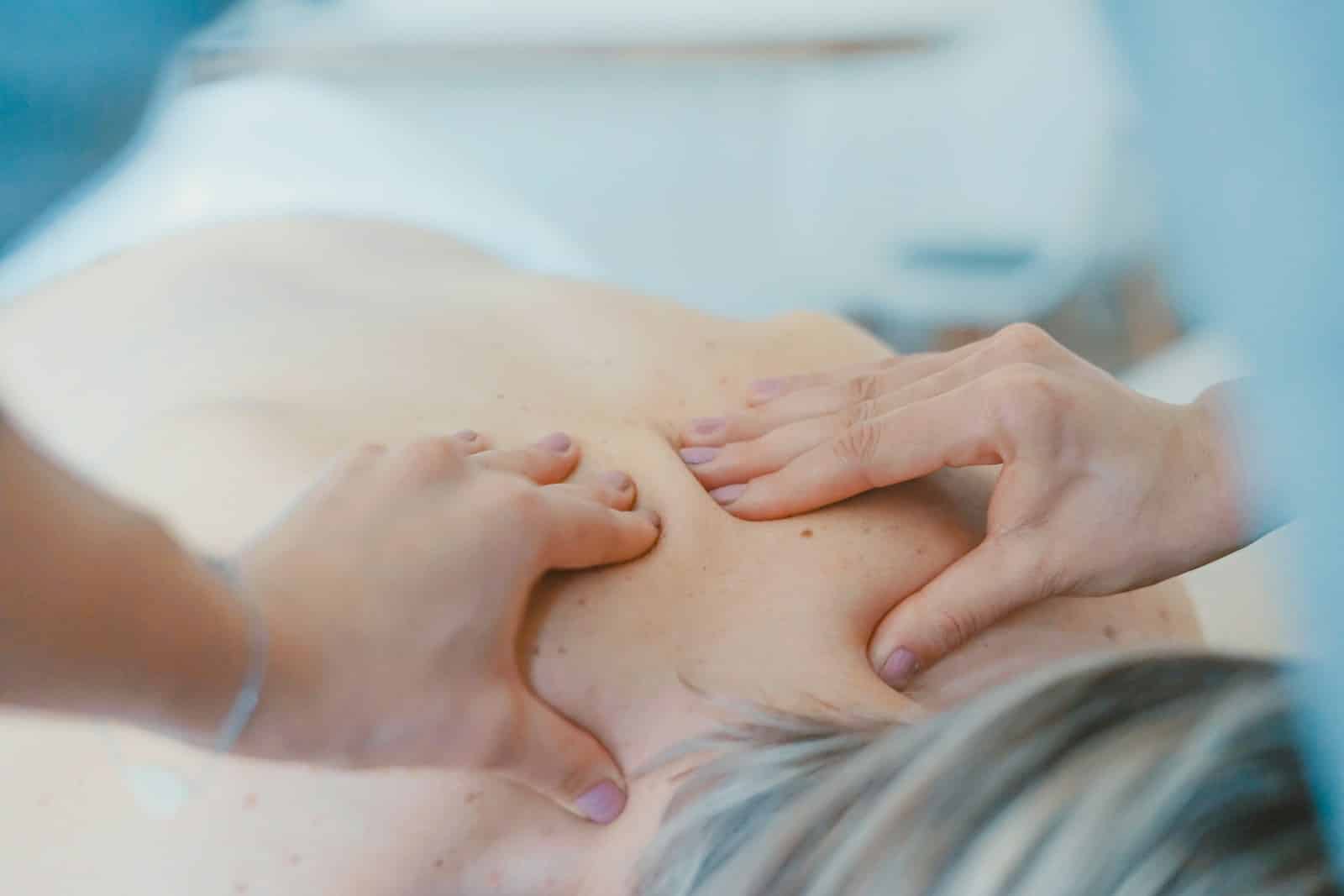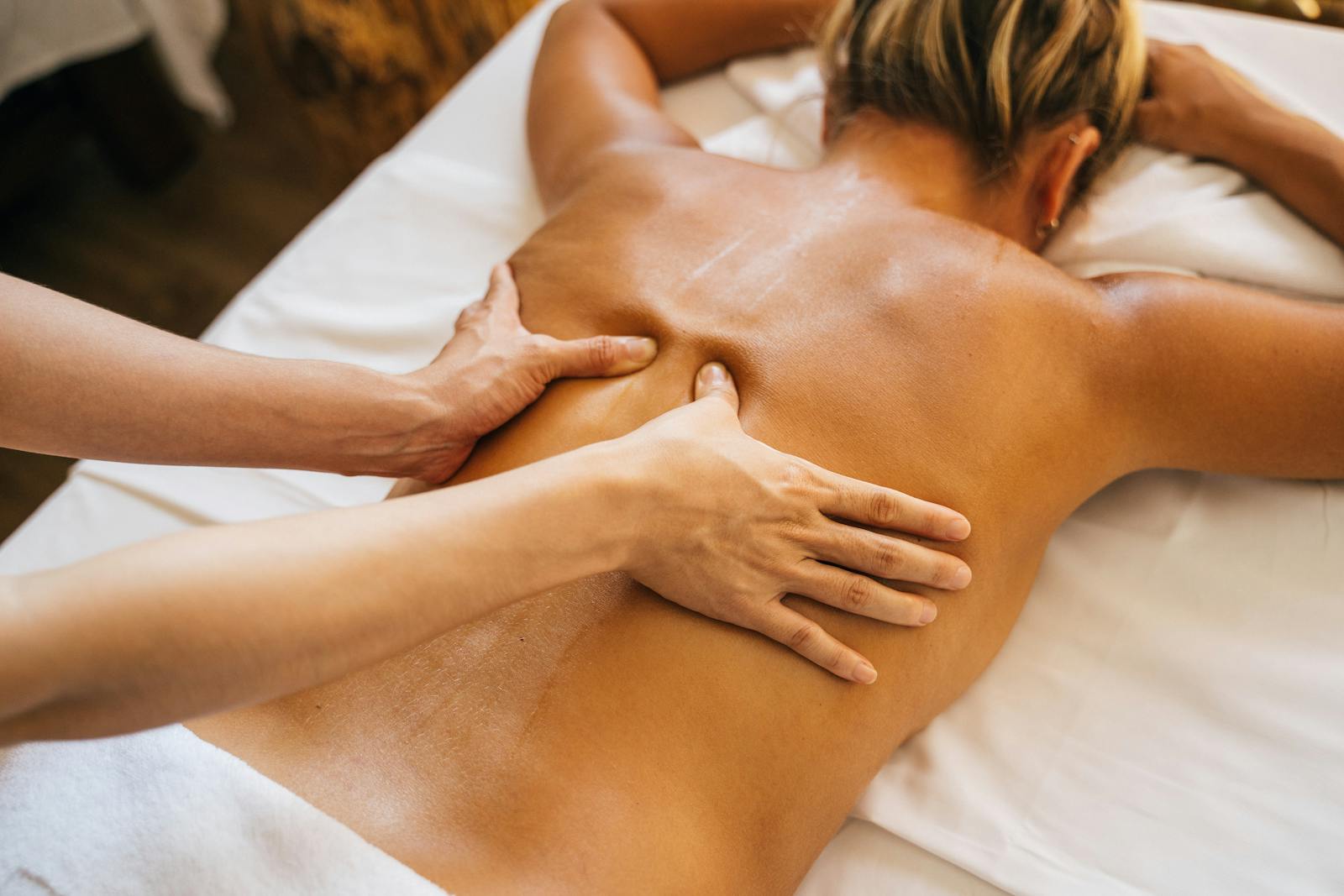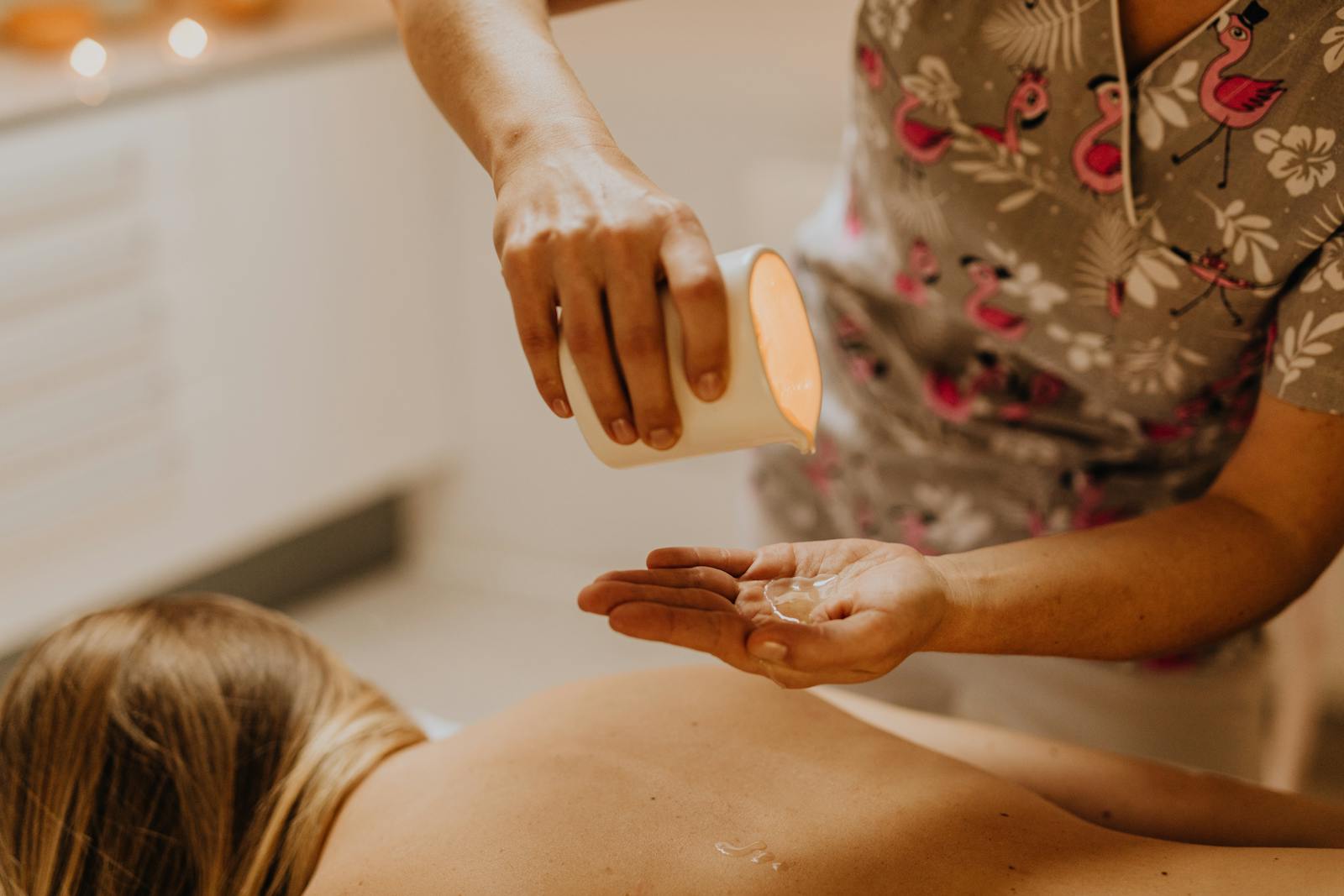In the domain of therapeutic practices, back massages hold a significant place due to the wide array of benefits they present for both physical and mental health. They offer a solution to muscle tension, enhance circulation, and pave the way for relaxation. However, a deeper understanding of the anatomy of the back, the variety of massage techniques available, and the importance of professional ethics and training in delivering an effective massage should not be overlooked. This discussion will explore these facets further and consider the role of back massages in overall wellness.
Understanding the Basics of Back Massage
To fully appreciate the art and technique of back massage, one must understand its fundamental principles, starting from the basic knowledge of human anatomy, the importance of touch, and the various methods and styles that can be employed. An understanding of the human musculoskeletal system is crucial in delivering effective massages. This intricate network of muscles, tendons, and bones forms the basis of the techniques used to relax muscles, reduce pain, and improve overall well-being.
The importance of touch cannot be overstated, as it is the primary medium through which the therapist interacts with the client. It is a powerful tool that, when used skillfully, can provide incredible relief and relaxation. However, the power of touch must be wielded responsibly, adhering to the highest standards of Massage Ethics. These ethics ensure that the massage is performed professionally, respecting the boundaries and comfort of the client.
Lastly, the use of Massage Tools can enhance the effectiveness of a back massage. Various tools such as massage stones, rollers, and wands can provide different sensations and aid in reaching deeper muscle layers. These tools, combined with the knowledge of human anatomy and adherence to massage ethics, can elevate the massage experience.
Historical Background of Back Massages
The history of back massages is both extensive and fascinating, with roots tracing back to ancient civilizations. The progression of this therapeutic practice has been influenced by various cultures over time, each contributing unique techniques and perspectives. To fully appreciate the modern back massage, it is essential to understand its historical evolution and the cultural influences that have shaped its development.
Ancient Origins of Massages
Delving into the ancient roots of massage therapy, one discovers its presence in diverse cultures worldwide, signaling its universal recognition as a healing technique. The symbolism of massage in these cultures often represented balance and harmony, embodying the therapeutic touch used to restore physical and emotional health. Ancient Egyptians, for instance, integrated massage into medical practices around 2500 B.C., with hieroglyphics depicting individuals undergoing such procedures. Similarly, in ancient China, massage was an integral part of medical treatment, going back to 2700 B.C. as documented in The Yellow Emperor’s Classic of Internal Medicine. Across the globe, in early India, Ayurveda medicine included massage as a vital method of treatment, signifying the profound historical significance of massage as a therapeutic touch technique.
Evolution of Back Massages
Tracing the historical trajectory of back massages, we encounter its gradual evolution from a rudimentary form of palliative care to a complex, scientifically-backed therapeutic practice. This journey of transformation can be encapsulated in three key stages:
- Primitive Era: Early humans used simple tools and basic techniques to alleviate bodily discomfort.
- Middle Ages: With the advent of more sophisticated massage equipment like wooden rollers and stone pads, the therapeutic potential of back massages began to be realized.
- Modern Times: The therapeutic evolution of back massages has reached its pinnacle today, with the integration of advanced technologies and research-driven therapeutic techniques.
Thus, back massages have evolved from a simple soothing activity to an essential part of modern healthcare, highlighting the profound impact of technological advancements and scientific research on its development.
Cultural Influence in Massages
Cultural tapestries of varied societies have intricately woven the practice of back massages into their healthcare traditions, influencing techniques and philosophies across different ages and continents. In some cultures, massage superstitions prevail, such as the belief that massages can dispel negative energies or rejuvenate the soul. In contrast, there exist cultural taboos in other societies which perceive massages as a form of intimate engagement, reserved only within certain relationships. Nevertheless, the universal recognition of the therapeutic benefits of back massages reverberates through these cultural differences. Understanding these variations not only enriches our knowledge of the therapeutic practice but also fosters a more inclusive approach towards integrating back massages into global healthcare routines.
The Anatomy of Back Massages
The underlying framework of back muscles plays a vital role in the effectiveness of back massages. Various techniques, when applied appropriately, can lead to significant health benefits, especially when these massages are performed regularly. Therefore, a thorough understanding of the anatomy involved, the techniques utilized, and the potential benefits accrued is essential for both practitioners and recipients of back massages.
Understanding Back Muscle Structure
To fully comprehend the intricacies of back massages, one must first grasp the complex structure of back muscles. The back is comprised of intricate layers of muscles that play an essential role in everyday motion and posture. Understanding this structure is the key to muscle tension relief and highlights the importance of spinal alignment.
- Superficial Muscles: These are the outermost muscles, responsible for shoulder and neck movements.
- Intermediate Muscles: Situated beneath the superficial muscles, these muscles assist in respiratory processes.
- Deep Muscles: These are closest to the spine and maintain posture and control movements of the vertebral column.
A profound understanding of these muscle groups and their respective functions is pivotal in providing an effective back massage.
Techniques for Effective Massages
Often, effective back massages employ a variety of techniques that are based on the intricate anatomy of the back muscles, designed to alleviate tension and promote relaxation. These techniques can range from deep tissue massage, utilizing the practitioner’s strength and understanding of muscle fiber direction to release knots, to lighter Swedish style strokes that soothe and calm the nervous system. The use of massage tools, such as rollers or balls, can assist in reaching deeper layers of muscle and fascia, enhancing the therapeutic touch. The application of heat or cold also plays a significant role, helping to increase blood flow or reduce inflammation respectively. By understanding the anatomy, a practitioner can tailor techniques to the individual, ensuring a truly effective massage.
Benefits of Regular Massages
Reaping the full benefits of regular massages hinges largely on a thorough understanding of back anatomy. Having a deep understanding of back anatomy is crucial to dispel common massage misconceptions and embrace the therapeutic touch.
- Reduced Muscle Tension: Regular massages can help relieve muscle tension by applying pressure to the affected areas, promoting relaxation and relief.
- Increased Blood Circulation: The therapeutic touch of massage enhances blood flow, supplying essential nutrients to muscles and tissues, facilitating the body’s healing process.
- Improved Mental Well-being: Regular massages can also contribute significantly to mental health. They can help manage stress, anxiety, and even sleep disorders.
Different Techniques in Back Massage
While there are numerous techniques in back massage, each one serves a unique purpose and can offer a distinct therapeutic benefit. It is important to follow the Massage Etiquettes while performing these techniques to guarantee the comfort and safety of the client.
The Swedish Massage, one of the most commonly used techniques, utilizes long, soft strokes combined with gentle kneading and tapping. This technique is incredibly effective in releasing muscle knots and relieving tension.
Deep Tissue Massage, which is another popular technique, uses more pressure and targets the inner layers of the muscles and connective tissues. It is especially beneficial for chronic aches and pains.
The Hot Stone Massage employs heated stones as therapeutic tools. The warmth from the stones helps relax and loosen muscles, allowing the therapist to apply deeper pressure if needed.
Shiatsu, an eastern technique, applies pressure using fingers, thumbs, and palms in a rhythmic sequence. It is believed to stimulate the body’s natural healing capabilities.
Lastly, the Sports Massage, designed specifically for athletes, targets muscle-tendon junctions to enhance performance and promote recovery.
Each technique requires skilled application and understanding of the human body to achieve the desired therapeutic benefits.

Importance of Professional Training
The significance of professional training in the field of back massage cannot be overstated. Properly certified skills guarantee the application of correct techniques, which is essential for effective treatment and client safety. Additionally, the knowledge gained through professional training greatly reduces the risk of causing potential injuries.
Necessity of Certified Skills
Why is professional training and certification important in the field of back massage? The answer revolves around the necessity of certified skills, which are critical for three reasons:
- Safety: Properly trained professionals understand how to perform techniques safely, reducing the risk of injury to clients.
- Effectiveness: Skill certification guarantees that the practitioner is capable of delivering effective massage sessions that truly benefit the client’s health and wellbeing.
- Massage Ethics: Certification courses cover the ethical guidelines of practice, helping practitioners uphold professional standards and foster trust with clients.
These points emphasize why professional training is not just desirable but necessary in the field of back massage. It guarantees safety, effectiveness, and adherence to massage ethics, thereby elevating the overall quality of service.
Avoiding Potential Injuries
In the domain of professional back massage, avoiding potential injuries is essential, and this underscores the importance of thorough training. A thorough education in massage therapy not only hones one’s skills but also equips a practitioner with knowledge about Injury Prevention and Massage Contraindications.
Understanding the anatomy and physiology of the back is vital to avoid inadvertently damaging delicate structures during a massage. Proper techniques, such as avoiding pressure on the spine and being aware of sensitive areas, can reduce the risk of causing discomfort or injury.
Furthermore, being able to identify Massage Contraindications, such as skin conditions, medical issues, or recent surgeries, is necessary to prevent aggravating these conditions. Hence, professional training can significantly minimize potential injuries, ensuring both the therapist’s and client’s safety.
Benefits of Regular Back Massages
Regular back massages offer numerous health benefits, greatly enhancing blood circulation, reducing stress levels, alleviating back pain, and improving sleep quality. Notwithstanding massage contraindications and the improbable possibility of massage addiction, the advantages of this practice are worth noting.
- Enhanced Blood Circulation: Massages stimulate blood flow in the body, promoting oxygen and nutrient delivery to the muscles and tissues. This aids in the healing of muscle strains and injuries, and generally contributes to overall wellness.
- Stress Reduction: The soothing effect of massage helps lower cortisol levels, the body’s primary stress hormone. This reduction in stress levels can lead to improved mental health, better concentration, and enhanced emotional well-being.
- Pain Alleviation and Improved Sleep: Regular massages can significantly reduce chronic back pain. The relaxation achieved during a massage session also often leads to better sleep quality, contributing to improved overall health.
Risks and Precautions in Back Massages
While the benefits of back massages are significant, it is essential to also understand the potential risks and necessary precautions to guarantee safety and efficacy. Despite the therapeutic advantages, there are limitations that must be recognized. Overly vigorous massages can cause discomfort or even injury, particularly in individuals with certain health conditions such as osteoporosis or skin disorders.
The massage equipment used plays a vital role in ensuring safety. For instance, massage chairs or tables must be sturdy and supportive to prevent accidents. Inappropriate equipment or misuse can lead to strain, sprains, or even fractures. Additionally, any tools such as massage stones or rollers must be used correctly to avoid bruising or tissue damage.
Moreover, it is important to recognize the therapeutic limitations of back massages. They are not a substitute for medical treatment in case of serious back ailments. For example, massages cannot cure herniated discs or spinal stenosis; they can only aid in pain management and stress relief.
Home Massage Vs. Professional Massage
Exploring the world of back massages, there is a distinct comparison to be made between home massages and professional massages, each with their respective advantages and considerations. Home massages can be administered at any time and are often cost-effective, while professional massages are delivered by trained therapists who have a deep understanding of the body’s musculoskeletal system.
- Massage Costs: Home massages are often less expensive, as they eliminate the need for a professional therapist’s fee. However, professional massages, while generally costlier, provide the benefits of a therapist’s expertise and specialized techniques.
- Therapist Selection: When opting for a professional massage, one can choose a therapist based on their specialization, experience, and qualifications. This ensures that the massage is tailored to your specific needs and preferences.
- Effectiveness: While home massages can provide immediate relief and relaxation, professional massages typically yield more profound and longer-lasting results. This is due to the therapist’s knowledge of specific pressure points and massage techniques.
Choosing the Right Massage Oil
One essential aspect to keep in mind in the domain of massages is the selection of an appropriate massage oil, as it can greatly influence the overall effectiveness and experience of the massage. The oil serves not only as a lubricant, reducing friction and facilitating smoother strokes, but also as a medium to deliver nutrients to the skin.
A primary factor to keep in mind is oil allergies. Some individuals may experience adverse reactions to certain oils, like almond or coconut oil. It’s important to conduct a patch test before using the oil in a massage session to prevent any allergic reactions.
Equally important is the consideration of vegan alternatives. Increasingly, there are people who prefer vegan-friendly options for their personal care items, including massage oils. Oils like jojoba, grapeseed, or olive oil are excellent vegan alternatives. They provide the same benefits as non-vegan oils, without the involvement of any animal product or byproduct.
DIY Back Massage: A Step-by-Step Guide
Having chosen the appropriate massage oil, we can now proceed to the practicalities of performing a DIY back massage, making sure you are well-equipped with a clear, step-by-step guide.
To begin, it is essential to prepare your space. Make sure your environment is comfortable, calm, and quiet to promote relaxation.
Next, let’s explore the technique with a detailed three-step guide:
- Preparation: Start by applying a moderate amount of your chosen massage oil onto the palms of your hands. Make sure they are warm before you start the massage to promote relaxation.
- Application: Use massage tools if available. These could be handheld massagers or even simple household items. Make sure to apply pressure evenly across the back, avoiding the spine.
- Partner Assistance: Have a partner assist you in reaching difficult areas, such as the lower back. They can also help by providing feedback on pressure levels and comfort.
Remember, the primary purpose of a back massage is to relieve tension and promote relaxation, so always guarantee the comfort of the person receiving the massage.
In the next section, we will debunk common myths and reveal facts about back massages.
Myths and Facts About Back Massages
Let’s explore the world of fact and fiction as we debunk common misconceptions and affirm the truths about back massages. One of the prevalent Massage Misconceptions is that all massages must hurt to be effective. While some discomfort can be expected in therapeutic or deep tissue massages, a good massage should ultimately feel relaxing and soothing.
Fact Verification reveals another myth: the belief that massages only provide temporary relief. While it’s true that one session alone cannot solve chronic issues, regular massages can indeed play a significant role in long-term pain management and overall wellness.
Furthermore, some wrongly assume that back massages are merely a luxury, reserved for spa days and vacations. However, scientific research supports that consistent massage therapy can have deep-seated benefits, including reduced stress, increased circulation, and improved sleep.
Lastly, the misconception that massages can spread cancer cells is unfounded. Though adaptations may be needed based on individual health conditions, massages can be safely enjoyed by cancer patients, often providing much-needed relief and relaxation.
Frequently Asked Questions
What Is the Average Cost of a Professional Back Massage?
The average cost of professional therapeutic services varies, depending on massage varieties and location. Generally, prices range from $50-$200 per hour. Some insurance policies may cover these treatments, reducing out-of-pocket expenses for the patient.
How Often Should Someone Get a Back Massage for Chronic Pain Relief?
For chronic pain relief, the frequency of utilizing massage techniques can vary but typically, a session every one to two weeks is suggested. This can help manage the pain threshold and provide consistent relief.
Can Pregnant Women Safely Get Back Massages?
Certainly, pregnant women can safely undergo certain massage techniques with proper precautions. However, consulting a healthcare provider first is crucial, as individual pregnancy conditions may warrant specific safety considerations.
Are There Any Specific Stretches to Do Before a Back Massage Session?
Before any physical activity, including massage techniques, it can be advantageous to perform gentle stretches, focusing on flexibility and range of motion. It’s also recommended to stay well-hydrated before the session to guarantee ideal results.
How Can I Maintain the Benefits of a Back Massage for a Longer Time?
To prolong the effects of a therapeutic session, regular practice of guided massage techniques and the use of essential oils with recognized benefits can play a significant role in maintaining and enhancing the overall results.


